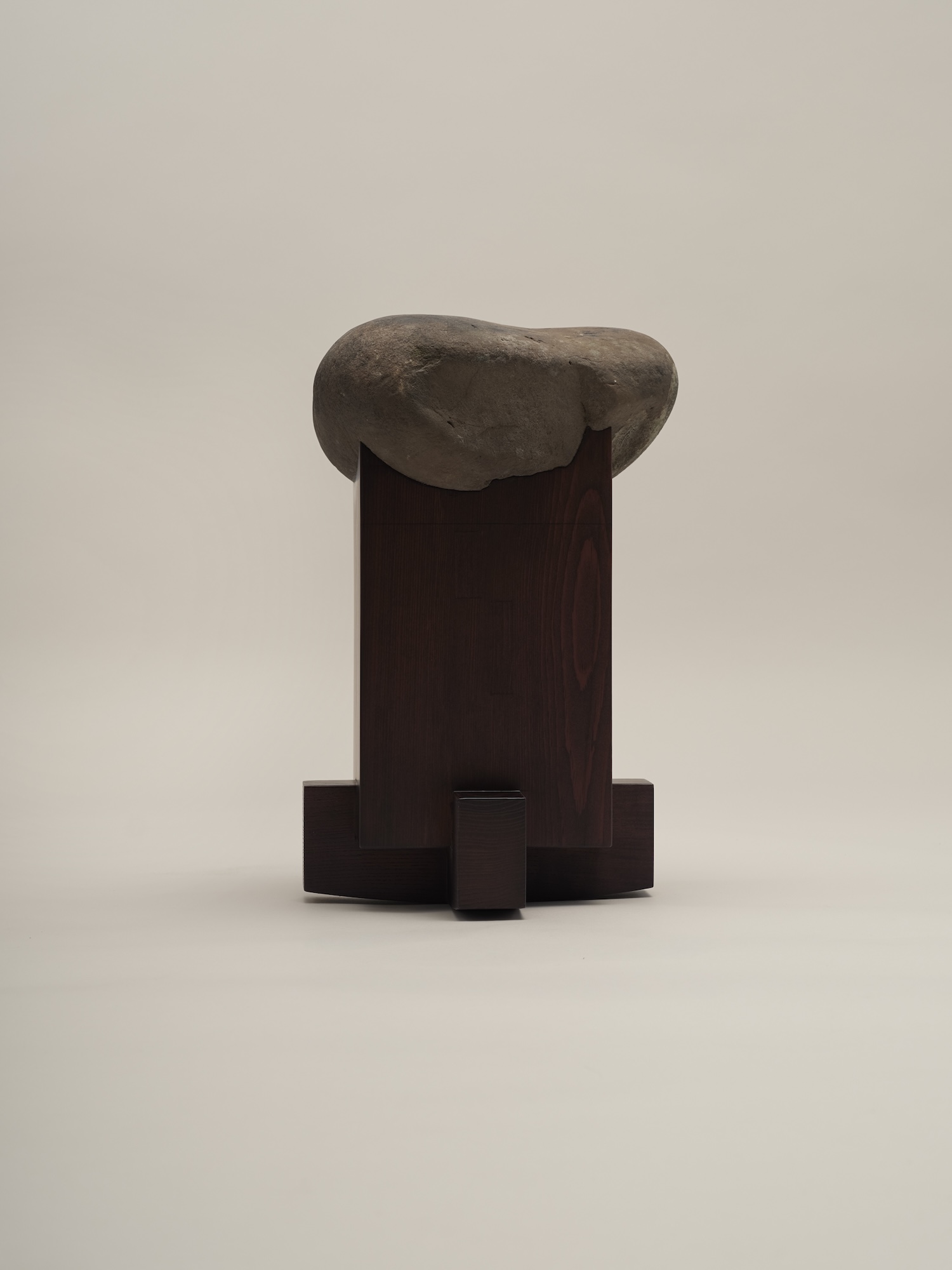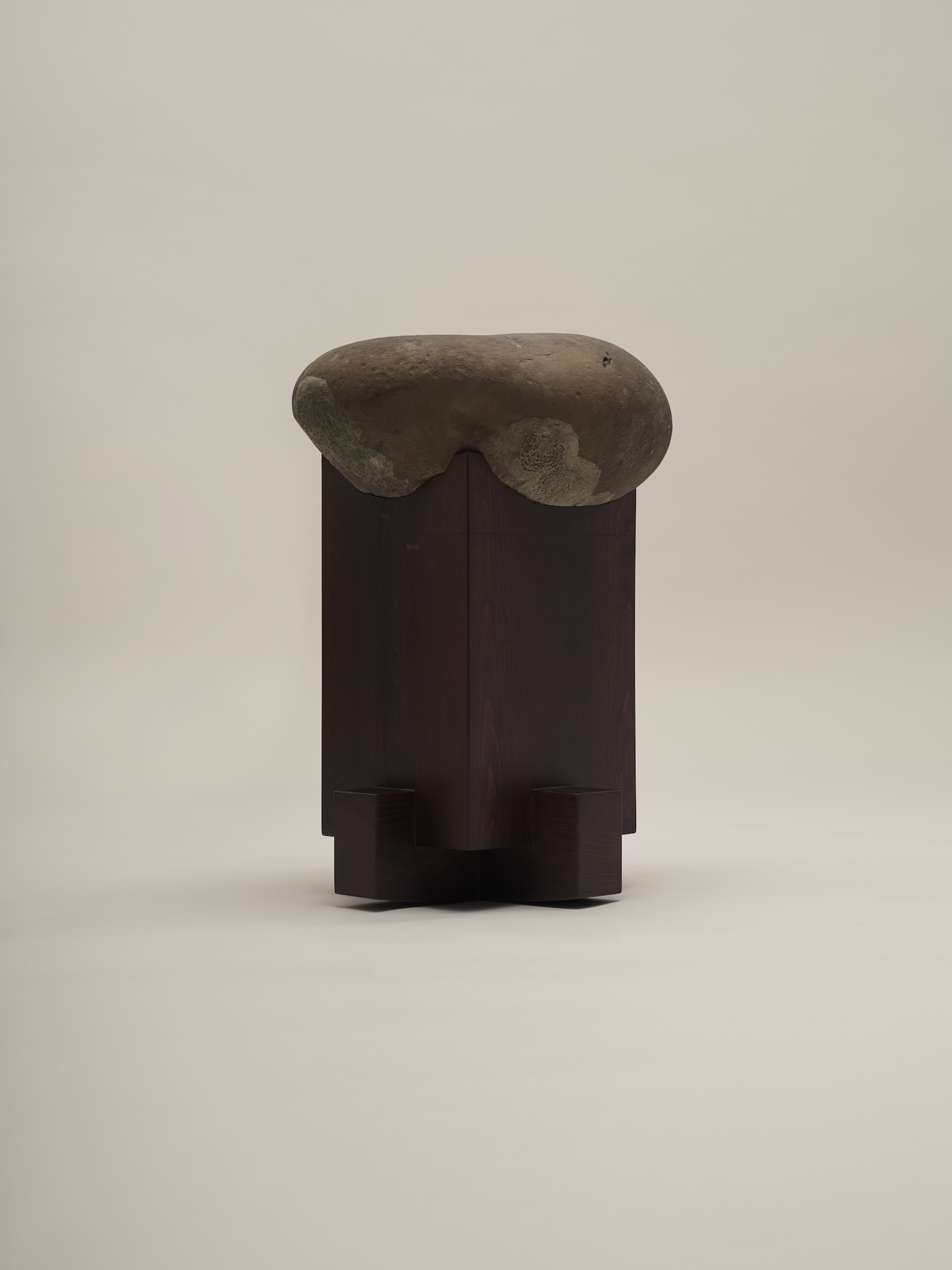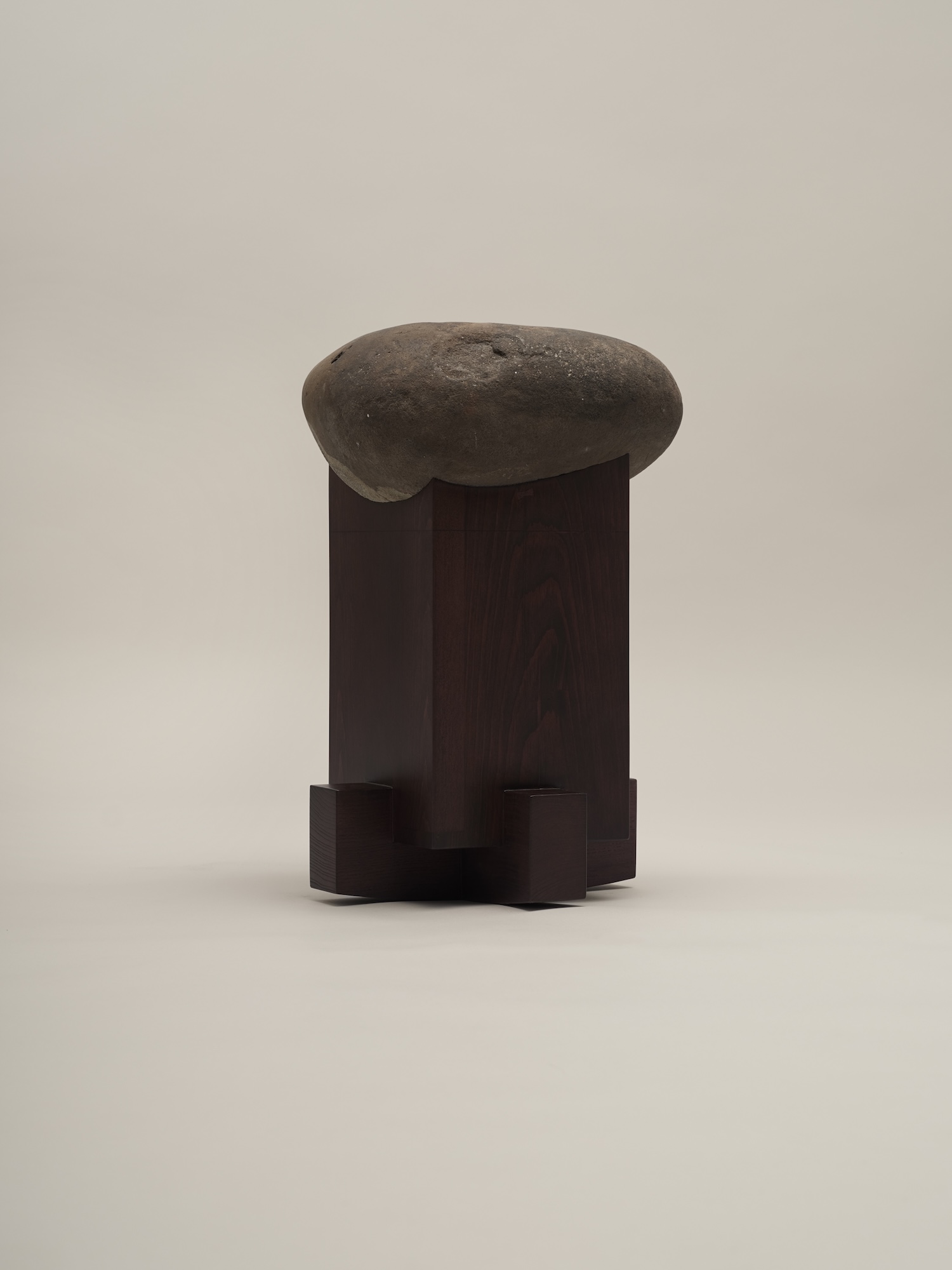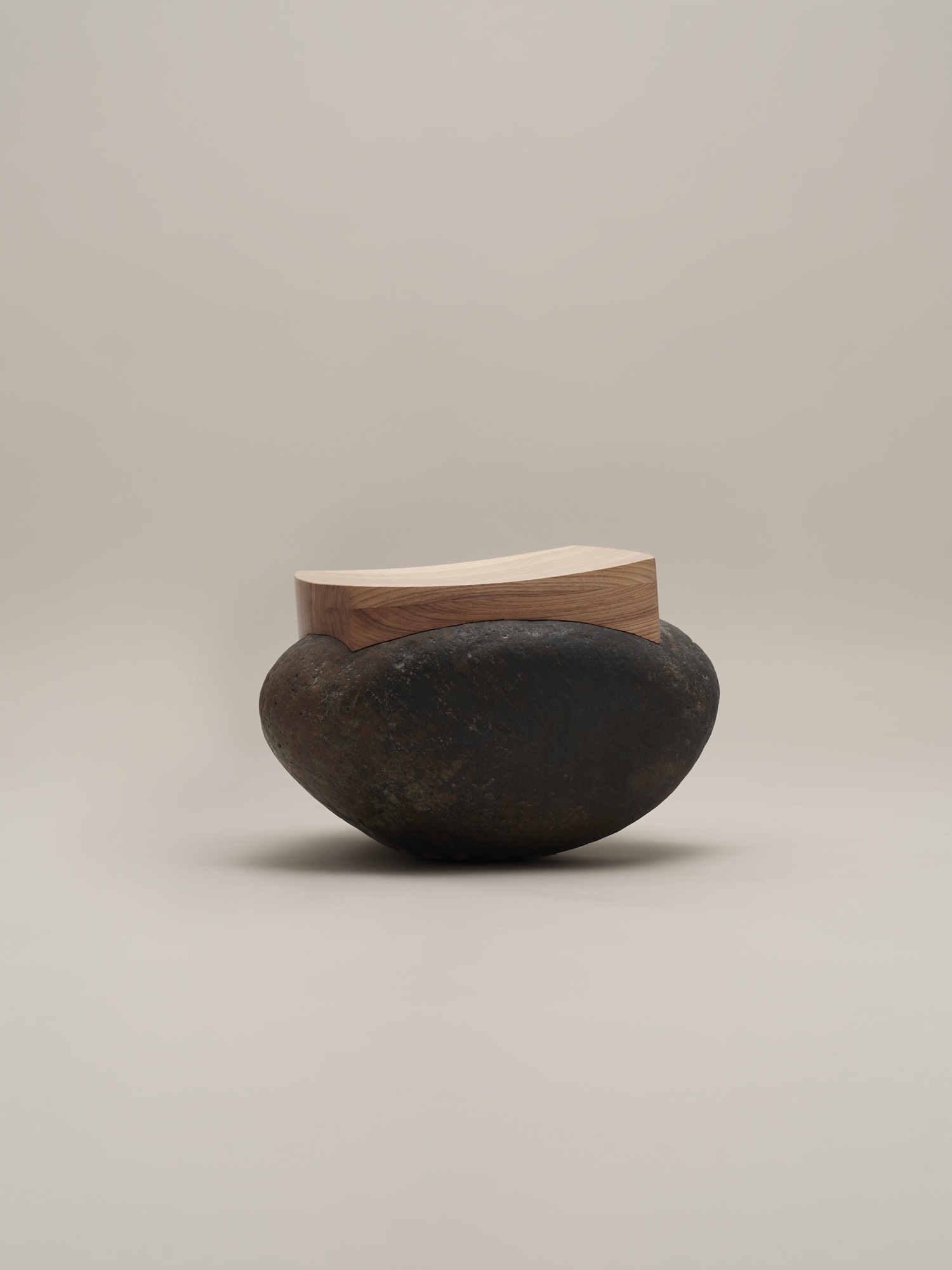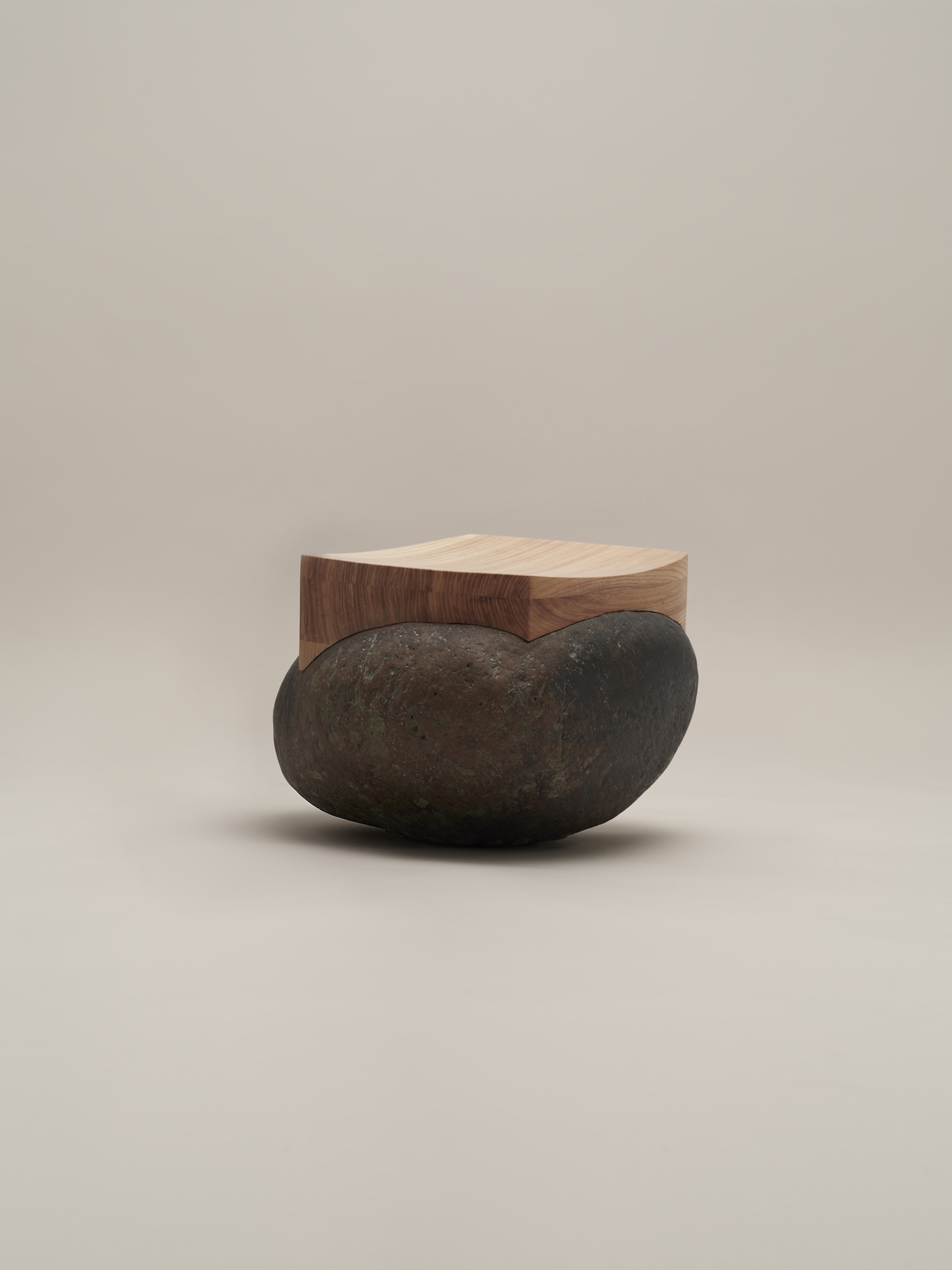Sitting on Stones is a minimalist collection created by New York-based practice Thomas Yang Studio. The designer’s journey begins not in the studio but at the water’s edge, selecting each stone with the intimacy of a collector choosing talismans. “I carried from Trout Brook, and carved to fit the centuries old reclaimed barn wood,” they explain, describing a process that transforms scavenging into curation. This is craft as pilgrimage – the designer as gatherer, carrying forward both material and meaning from landscape to living space.
The technical innovation lies not in complexity but in elegant simplicity. The taller Rocking Rock Stool employs pine and maple alongside Quebec barn wood, creating a dialogue between new growth and weathered timber. The stone, carved to nestle precisely within the wooden frame, becomes both anchor and pivot point. Here, the designer references ishibatate – the Japanese timber framing technique of “standing on stones” – transforming structural necessity into poetic function.
The lower Floor Rocking Stool extends this material conversation with white oak and felted stone bottoms, allowing the rocking motion to travel safely across any surface. The felt addition demonstrates how contemporary makers honor traditional forms while adapting them for modern life. The stone retains its “natural form as a function,” as the designer notes, celebrating rather than concealing the material’s inherent character.
This collection arrives at a moment when design increasingly seeks authenticity in an age of mass production. Like the work of contemporary makers who mine craft traditions for contemporary relevance, these stools offer what the designer calls “artifacts of the home” – objects that accumulate meaning through daily interaction. The rocking motion becomes meditative, the stone’s weight a reminder of geological time in our accelerated present.
The ishibatate reference positions this work within a broader conversation about cross-cultural craft knowledge. Just as Japanese builders used stones to elevate and protect wooden structures, these stools elevate the act of sitting into something more contemplative. The designer’s “love letter to materials” becomes a bridge between Eastern and Western making traditions, between ancient technique and contemporary form.
